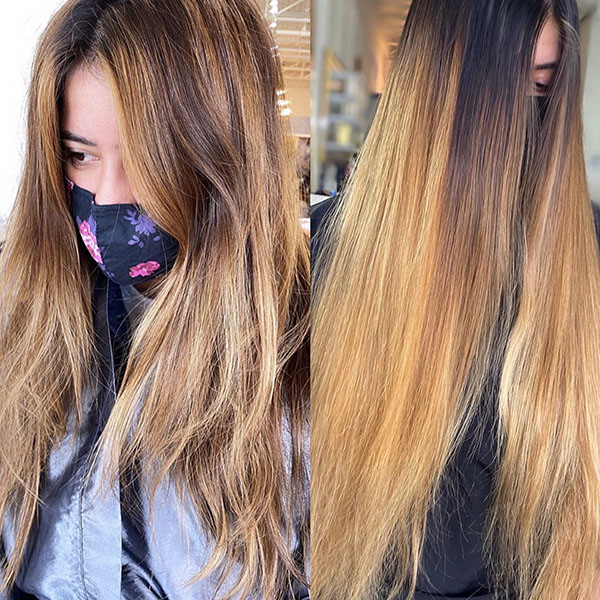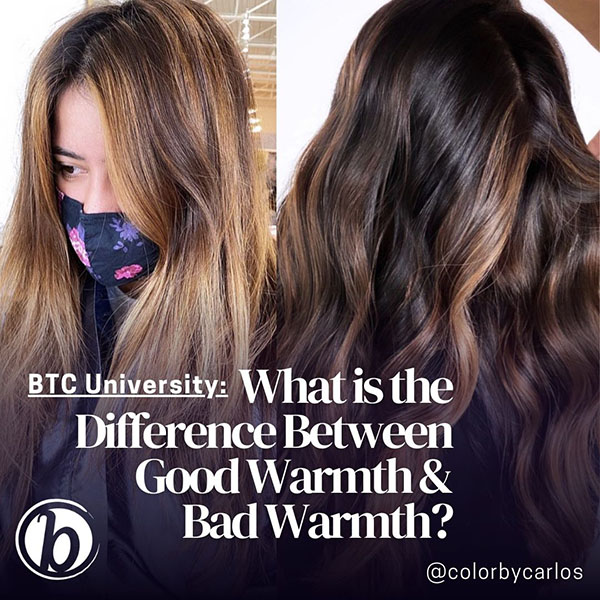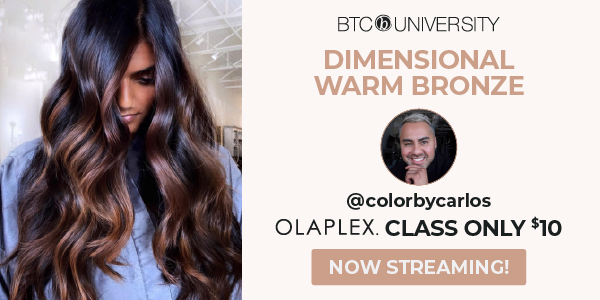Good Warmth vs Bad Warmth: How to Tell the Difference
How To Create Warm Tones (Without SEEING YELLOW!)
No longer a taboo hue, warmth is taking over every client’s inspo board. Warm blondes, modern auburns and warm dimensional brunettes are the hottest shades of the year. But if you’re battling with brassy oranges or unwanted yellow tones, we’re going to assume that’s not the warmth you were looking for.
That’s why, when Olaplex artist and #ONESHOT winner Carlos Rojas (@colorbycarlos) shared his tips for how to spot a good warmth vs a bad warmth—we HAD to know. Keep scrolling for everything you need to know about warm brunettes, why lift is important and how to achieve warm tones with a COOL formula.
Unlock MORE cut, color and styling trends you NEED to know for 2023!
Good Warmth is Controlled and Intentional
To be honest, this all boils down to your client’s inspo picture. It’s important to know what level of warmth they are comfortable with so you as the professional can suggest shades that work with their skin tone and are best suitable for their look. For brunettes requesting Bronze, Carlos explains that what is perfect about this shade, is how customizable it is.
“Bronze is important because it is universally flattering,” he explains. “It will enhance many clients and a variety of skin tones. It can be formulated with ash for a cooler finished result, or with gold to be on the warmer side—or even—more red if they are into that. It’s a great look to offer any clients with starting Levels 3 through 6 because you can play around with it.”
Slide to see the Before & After from Carlos’ class on BTC-U!

Bad Warmth Lives in the Lift
Just because your client is requesting a warmer end result doesn’t mean they want to be brassy. Remember your beauty school basics: The darker the starting level, the more warmth when lifting. You can use the warmth achieved while lifting as part of the finished result, but Carlos advises against it. Here’s why:
“You have to remember that whatever level you lift to is what’s going to be visible when the gloss fades. So, if you lift your brunette to an orange tone, it will fade to an orange tone. Now that doesn’t mean you have to lift them to a Level 10 platinum, but definitely past the unwanted orange,” he explains.

Apply A Cool-Toned Midlight for Controlled Warmth
Yes, you read that right. But let’s not jump ahead, if you’re wondering “What is a midlight?” Let Carlos explain: “A midlight is [applied] to connect between the client’s base color and highlight. It’s not a lowlight, we’re not trying to match her base, we’re just trying to connect the two.”
Since his midlight is strategically formulated to live between the base and highlight, Carlos mixes cool-toned permanent color with a higher developer to gently lift the hair to the level of warmth he wants without the brassiness—aka a toned warmth.
Tap the beaker for Carlos’ full formula breakdown!









